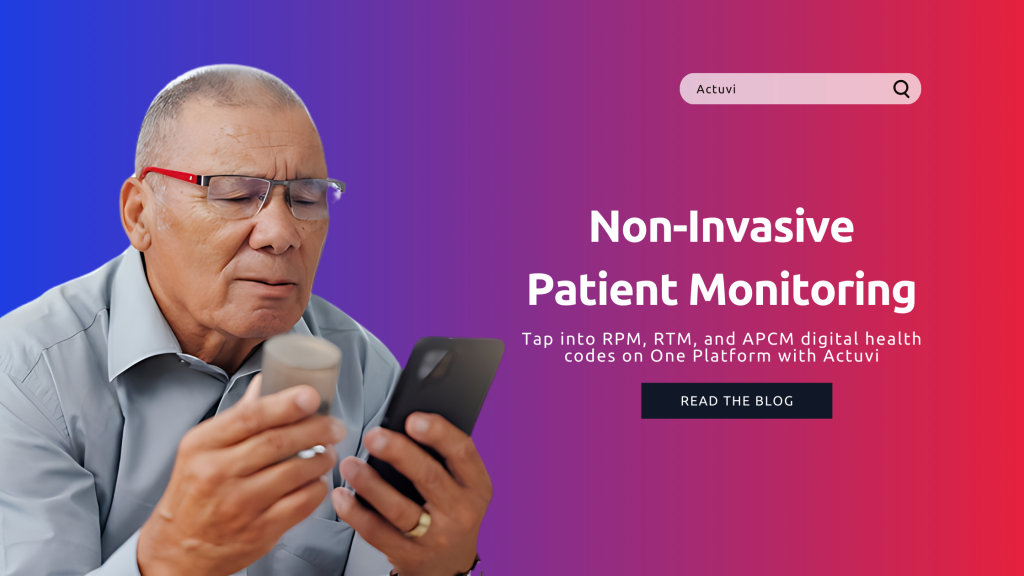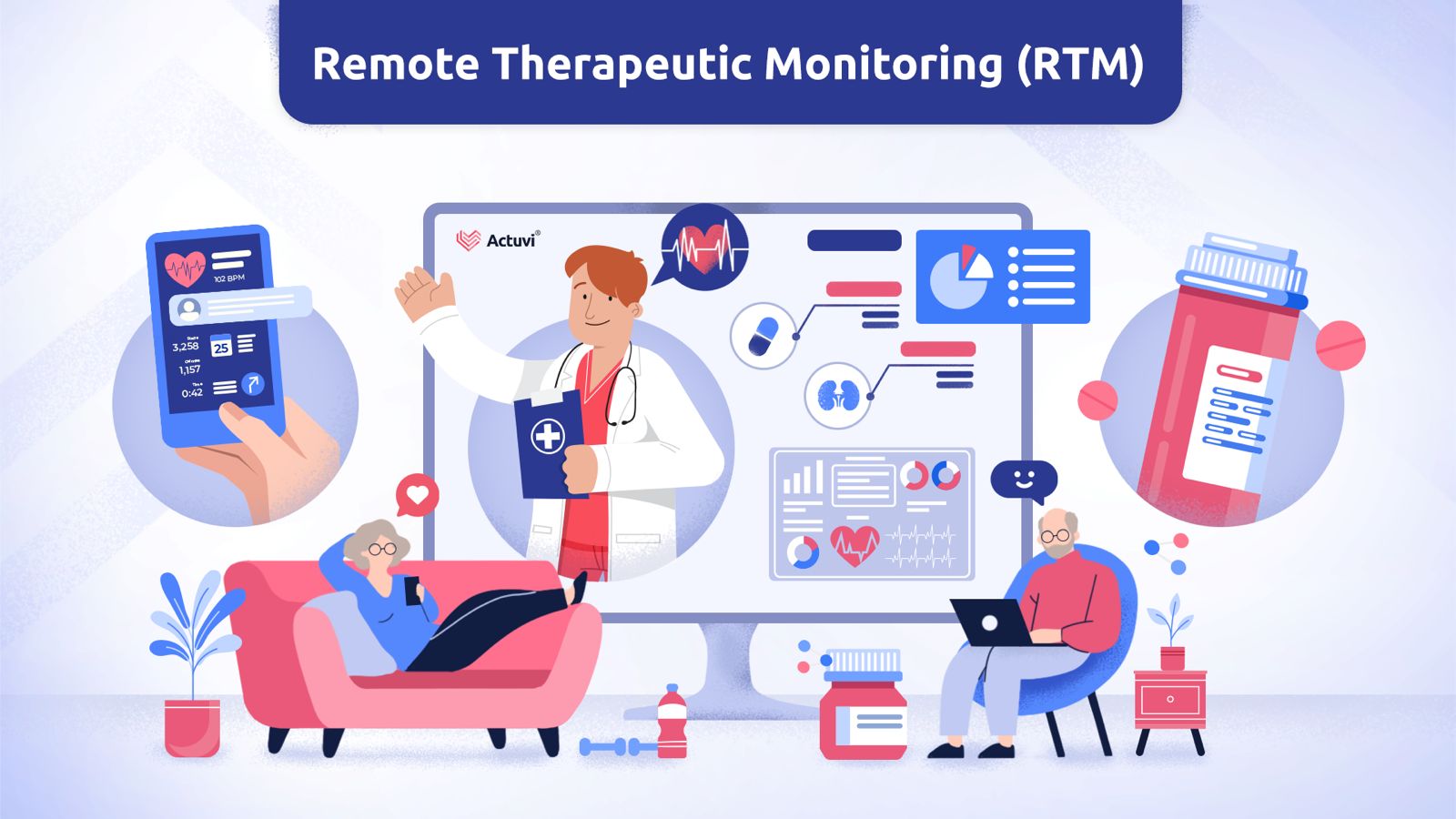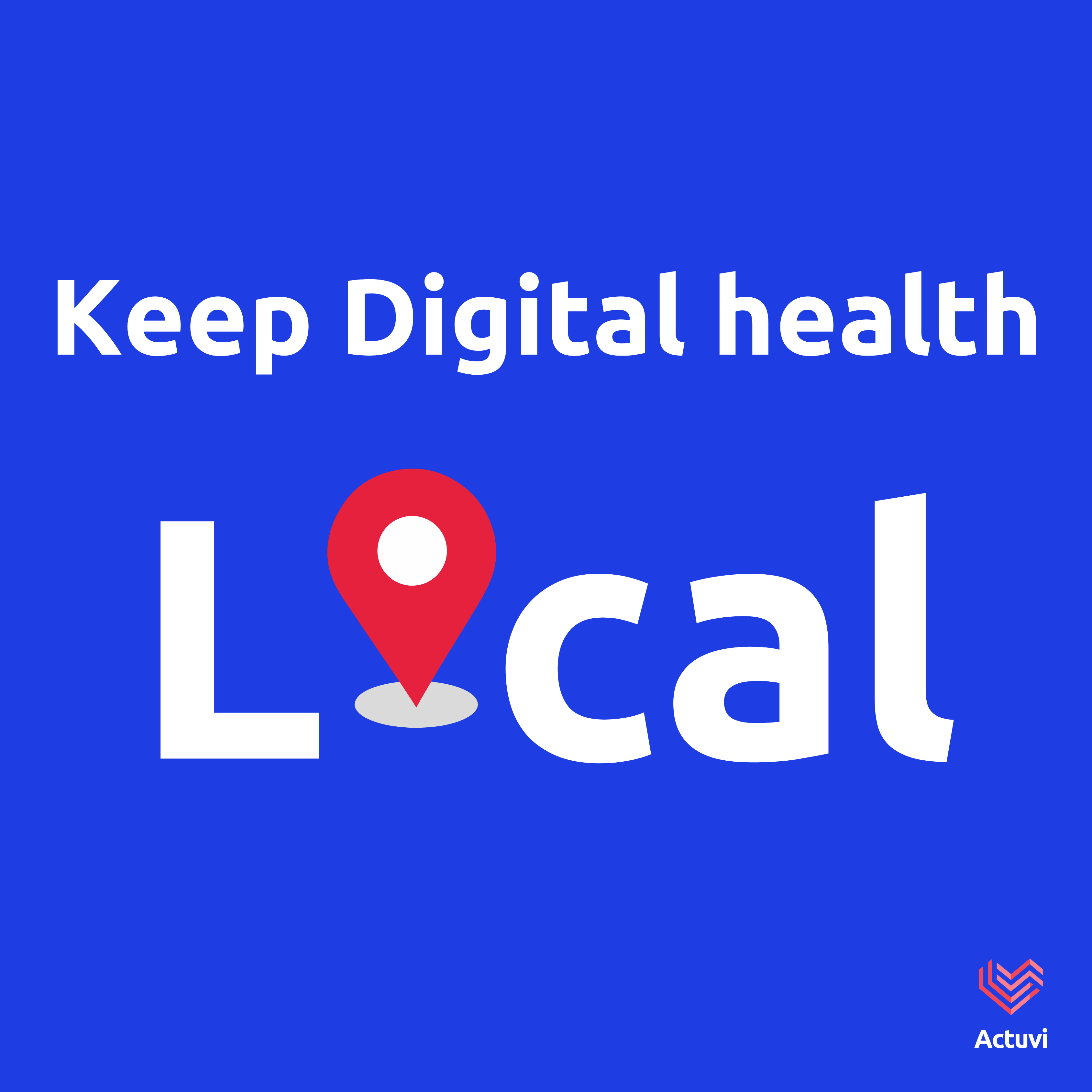
Remote patient monitoring (RPM) and remote therapeutic monitoring (RTM) have transformed healthcare by enabling providers to track patients’ health outside traditional clinical settings. With the 2025 introduction of Advanced Primary Care Management (APCM), Medicare has further simplified reimbursement for value-based care. Actuvi’s platform consolidates these services into one system, allowing clinics to bill for RPM/RTM and APCM on one platform without requiring new devices or complex workflows.
This blog explains how non-invasive monitoring works, the 2025 CMS billing updates, and how Actuvi helps providers implement these tools efficiently while reducing costs and administrative burdens.
Understanding Non-Invasive Monitoring
Non-invasive monitoring uses external devices or apps to collect health data without invasive procedures. Actuvi supports three key Medicare-backed services, each addressing distinct clinical needs:
1. Remote Patient Monitoring (RPM)
- Purpose: Track physiological data such as blood pressure, glucose levels, and oxygen saturation to manage chronic conditions like hypertension, diabetes, and COPD.
How It Works:
- Device Flexibility: Actuvi Intelligence (AI) allows patients to use their existing devices for RPM, so neither you nor your patients have to bear the costs of buying new devices. Compatible devices include FDA-cleared blood pressure cuffs, glucometers, and wearables.
- Automatic Data Sync: Measurements transmit securely to Actuvi’s platform via Bluetooth or SMS, eliminating manual entry errors.
- Clinician Access: Real-time dashboards display trends with color-coded alerts for readings outside preset thresholds (e.g., systolic BP >140 mmHg).
Billing Codes:
CPT Code 99453 (one-time): ~$20 for initial set-up and patient education on using RPM equipment.
CPT Codes 99454 (monthly): ~$50 for remote monitoring of physiological parameters with daily recording or programmed alert transmission. Requires at least 16 days of data collection per month from the patient.
CPT Code 99457 (monthly): ~$50 for remote physiologic monitoring treatment management services. Requires at least 20 minutes of clinical staff/physician/other qualified healthcare professional time in a calendar month and interactive communication with the patient/caregiver during the month.
CPT Code 99458 (add-on): ~$40 for each additional 20 minutes of treatment management services. Can be billed in unlimited 20-minute increments each month with reimbursement for the additional time beyond the initial 20 minutes included in CPT code 99457.
2. Remote Therapeutic Monitoring (RTM)
- Purpose: Track non-physiological data like pain levels, medication adherence, and therapy progress to manage musculoskeletal, respiratory, or cognitive behavioral health conditions.
How It Works:
- Mobile App: Actuvi’s free mobile app meets FDA’s requirements for Software-as-a-Medical Device (SaMD), making it free and easy to onboard patients. The app includes secure messaging, custom assessments, and therapy reminders.
- Customizable Workflows: Clinicians create condition-specific assessments (e.g., “Rate your back pain from 0-10”) and set escalation rules (e.g., notify provider if pain exceeds level 7).
- Patient Engagement: Push notifications remind patients to log symptoms or complete exercises, improving adherence.
Billing Codes:
CPT Code 98975: ~$20 (one-time code) for initial set-up and patient education on using RTM equipment.
CPT Codes 98976, 98977 & 98978(monthly): ~$50 (each) for ongoing RTM services for monitoring. Requires at least 16 days of data collection per month from the patient.
CPT Code 98980 (monthly): ~$50 for RTM treatment monitoring services provided by a physician or qualified healthcare professional, requiring at least one interactive communication with the patient per month.
CPT Code 98981 (add-on): ~$40 for each additional 20 minutes of treatment monitoring time by a physician or qualified healthcare professional in the same calendar month as code 98980.
3. Advanced Primary Care Management (APCM)
- Purpose: Simplify chronic care management under value-based models.
2025 Updates – New Codes:
G0556: APCM for Medicare patients with one or fewer chronic conditions (Level 1).
Reimbursement – $15 per patient per month
G0557: APCM for Medicare patients with two or more chronic conditions (Level 2).
Reimbursement – $50 per patient per month
G0558: APCM for Medicare patients with two or more chronic conditions who are Qualified Medicare Beneficiaries (Level 3)
Reimbursement – $110 per patient per month
- No Time Thresholds: Unlike traditional care management, APCM billing doesn’t require tracking minutes spent per patient.
- Compatibility: APCM can be billed alongside RPM or RTM for the same patient in the same month.
- Key Benefit: Focus on care quality over administrative tasks.
How Actuvi Simplifies Implementation
1. No New Devices Required
Existing Device Integration:
- Actuvi supports multiple integrations, including:
- Blood Pressure monitoring devices
- Glucose Monitoring devices
- Wearables
Cost Savings: Clinics avoid $100–$500/patient costs for new devices. Patients use tools they already trust, reducing onboarding resistance.
2. Unified Platform for RPM, RTM, and APCM
Single Dashboard:
- View aggregated data (vitals, symptoms, adherence) in customizable reports.
- Filter by patient risk level, condition, or billing code.
Automated Billing: - Actuvi auto-populates CPT codes based on completing requirements (e.g., 99454 for 16+ days of RPM data).
- Export-ready documentation for audits.
APCM Workflows:
- Allows providers to assess patient-submitted media for diagnostic and treatment purposes.
- Supports brief, patient-initiated interactions with a healthcare practitioner via various communication technologies.
3. Compliance and Security
- HIPAA Compliance: End-to-end encryption for data at rest and in transit.
- Access Controls: Role-based permissions ensure only authorized staff view sensitive data.
Real-World Applications
Case Study 1: Hypertension Management
Patient Profile: 65-year-old male with uncontrolled hypertension (150/95 mmHg baseline).
Implementation:
- RPM Setup: Patient uses existing Omron cuff; readings sync to Actuvi immediately.
- Alerts: Clinician notified when BP exceeds 140/90 mmHg for three consecutive days.
- APCM Billing: Clinic bills G0556 for ongoing support for patient.
Case Study 2: Post-Knee Surgery Recovery
Patient Profile: 58-year-old female recovering from ACL reconstruction.
Implementation:
- RTM Tracking: Patient logs pain levels (1-10 scale) and completes PT exercises in-app.
- APCM: Clinic bills G0557 for ongoing support for patient.
Getting Started with Actuvi
Step 1: Choose your program and build your digital clinic
- Select RPM, RTM, or APCM—or mix services based on your patient population.
- Actuvi’s support team configures your digital clinic in a day.
- Clinicians receive training materials (videos, PDFs) for device troubleshooting.
Step 2: Staff Training
- Navigating the Actuvi dashboard.
- Setting alert thresholds and custom surveys.
- Generating billing reports.
- Ongoing Support: Dedicated account manager for workflow optimization.
Step 3: Enroll Patients (Zero Cost)
- Enroll patients on Actuvi’s app with zero app fees or device costs.
- Monitor data and generate billing reports through Actuvi’s dashboard.
Conclusion
Actuvi’s platform removes barriers to non-invasive monitoring by:
- Eliminating Device Costs: Patients use existing tools they already trust.
- Simplifying Compliance: Mobile app provides automated reminders and nudges.
- Maximizing Revenue: Automated billing reports for RPM, RTM, and APCM.
With 2025’s APCM updates, clinics can now focus on care quality over administrative tasks. Actuvi ensures compliance with CMS rules while delivering better outcomes for complex patient populations.
Next Step: Book a Demo to see Actuvi’s unified RPM/RTM/APCM workflows in action – https://dub.sh/digitalclinic.







